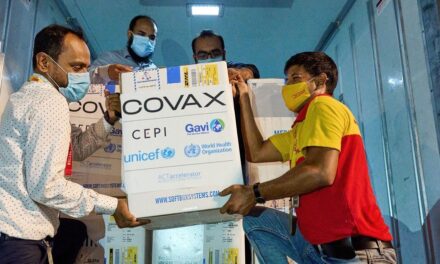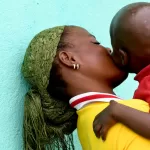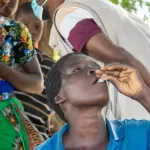Although the COVID-19 pandemic had triggered the roll-out of an “unprecedented number” of new and often innovative social protection measures, it was unable to stem a widening gap between rich and poor countries, according to a new UN report released on Thursday.
Offering fresh data on how social assistance spending has cushioned the unparalleled economic shock triggered by the pandemic, the UN Development Fund’s (UNDP) Mitigating Poverty assessment, revealed that in the 41 countries for which data was available, around 12 million people were prevented from falling below the poverty line, out of 15 million in danger.
Rich countries fair better
While the overall mitigation impact was strong, the study also uncovered that it was largely confined to high and upper middle-income States.
Rich countries spent up to 212 times per capita more than poor nations, on social assistance.
UNDP Administrator Achim Steiner pointed out that their ability to spend more on social protection measures, “played a critical role in keeping people out of poverty”.
For low middle-income countries, the report showed that social assistance spending was insufficient to avert a surge of people becoming newly-poor, and in low-income countries it was unable to prevent any income losses at all.
“This lifeline depends on where you live”, observed the UNDP chief. “The challenge now is to expand the fiscal space to allow all countries to implement and sustain social assistance spending measures, which is proven to be a highly cost-efficient and effective way to keep people from falling into poverty”.
Massive differences
The authors estimated that between 117 million and 168 million people became poor during the pandemic.
Although $2.9 trillion were invested in social protection policies globally, only $379 billion were spent by developing countries.
Meanwhile, on average, high-income countries allocated $847 per capita on social protection measures, including assistance and insurance, while low and middle-income counterparts spent an average of just $124 per head.
At the same time, total per capita social protection in low-income countries alone, was as little as $4.
‘Two-track recovery’
“The report provides some thoughts on how the pandemic impacted poor and vulnerable households in developing countries but also how important policy choices were to mitigate poverty increases”, said UNDP Chief Economist George Gray Molina.
It estimated that if applied to all poor and vulnerable households in the developing world, a temporary basic income – championed by UNDP – could have prevented the number of new extreme poor, globally.
Projections in the study illustrated that this could have been achieved by dedicating just 0.5 per cent of developing countries’ gross domestic product (GDP), spread over six months for income support-related measures.
“The bottom line, however, is that powerful social assistance programmes were out of reach for low-income countries, setting the stage for a two-track recovery from the pandemic”, the UNDP official said.











